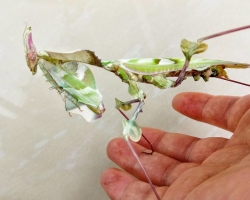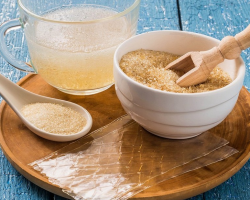How and when to plant the bow in the spring on the head and on the pen? How to fertilize onions in the spring?
Content
- When to plant onions, family on the head in the spring?
- How to plant onions and family in the spring?
- Preparation of the beds under the bow in the spring
- How to process the onion before planting in the spring and what to soak it in?
- Feeding onions in the spring on the head
- How to feed the winter onion in the spring, planted in the fall?
- How to plant onions on a pen in the spring?
- Planting onions-sovka: video
- Planting on a pen: video
In this article, we will figure out how and when to plant the onion in the spring, and what departure it needs.
When to plant onions, family on the head in the spring?

Landing Sevka should be carried out in the spring after the cessation of frost and the probability of night frosts.
- If the spring has succeeded in early, then you can plant the onion on the head from mid -April (if frost after sowing, onions can go to the pen).
- In order not to take risks, the “garden deeds” land on the head in mid -May, focusing on the gardener's calendar.
The date of landing also directly depends on the size of Sevka.
- On the eve of sowing, onion heads are recommended to be calibrated. In other words, planting material must be distributed to small, middle and large heads.
Planting is carried out by increasing.
- The first, in the beginning of May, the small Sevka lands.
- The middle onion (from 1 - to 2 cm) is customary to stick into the ground half a month after the small one.
- Big sowk must be planted the latest in order to avoid its growth in the pen.
Very often, among the planting material, you can find quite small onions (not more than 1 cm) - it is recommended to put such a sowing only in greenhouses.
- Family “Kushchevka” or, the so -called “shalot”, is considered more resistant to frost, therefore it can be planted since mid -April.
How to plant onions and family in the spring?
Preparation of Sevka

Planting onions in the spring always begins with the calibration of planting material.(described above)
- If the onion heads were purchased, and not grown last year, then they must be dried.
- If the planting material has remained since last year, then in winter it must be properly preserved - at a temperature of +18 degrees.
An important condition for planting your own material is its heating.
Warming up Sevka

Method number 1
- On the eve of landing, we place onion heads in conditions with a temperature of +20 degrees.
- We save this temperature regime for about 20 days.
- After the specified time, we create Sevka conditions at +30-40 degrees for 10 hours.
- We monitor not to overexpose planting material at fairly high temperatures.
- On the eve of the landing of Sevka, heated in this way, we process it with means of stimulating growth (read below).
Method number 2
- We put the hewon in hot water (+40-50 degrees) for 10-15 minutes.
- After the specified time, we transfer the onions into cold water all for the same 10-15 minutes.
- At the end of 15 minutes, we immerse the sowing into a solution of complex mineral fertilizer for onions for 5-6 hours.
Planting onions

- Before planting onions, it is necessary to make furrows up to 4 cm deep in the prepared area (in general, the depth directly depends on the size of Sevka) at a distance of 15-25 cm from each other.
- In the finished furrows, it is necessary to stick the bulbs at a distance of 7 cm from each other so that after they are instilled on the surface, the dry part of Sevka is barely visible.
Some experienced gardeners recommend thoroughly water the onions after planting, and then make mulch from straw or sawdust.
Preparation of the beds under the bow in the spring

To plant onions, it is necessary to choose open, well -lit and ventilated, land plots.
- As a rule, the preparation of the site for landing onions is carried out in the fall, therefore it is necessary to take into account the fact that the piece of land allocated for these purposes should not be in the lowland, where water stagnates for a long time in the spring.
- Water can become a dangerous enemy for onions, and his heads will begin to rot in the ground, thereby spoiling the entire crop.
- Sevok does not like acidic soils. If the soil in the selected area has increased acidity, lime can be added to it, which neutralizes acid.
- It is not recommended to plant sowing on the siteWhere the same bow was grown the day before - the site must be given at least three years for rehabilitation.
- Good predecessors for onions Potatoes, tomatoes, cabbage, cucumbers, beans, zucchini, peas, pumpkin are considered.
- The scheme has established itself very wellWhen carrots are planted near the bow - the smell of carrots drives the onion fly, and the smell of onions neutralizes the carrot fly.
- During the autumn preparation of the site it is recommended to dig to a depth in the bayonet shovel (15-20 cm) and level.
- The best option is considered autumn top dressing under the onion manure, peat compost or superphosphate mineral fertilizers.
Important! Fertilizing the Earth immediately before landing is strictly forbidden, since the bow will go to the arrow, and not to the head.
How to process the onion before planting in the spring and what to soak it in?

In addition to heat treatment, which was described in the article above, other antiseptic and feeding procedures are also applied to the Sevka before landing:
Processing in potassium permanganate
- To achieve the antiseptic effect of sowing a week before planting, soak for 20-30 minutes in a mild manganese solution (10 g of potassium permanganate for 10 liters of water).
- After soaking, we thoroughly rinse the onions and dry (if you are not going to immediately plant).
- There is an option immediately after potassium permanganate without washing, put in the ground.
Wooded with wood
- The process of processing with a solution of wood ash can help from the decay process.
- To prepare a solution in 10 liters of water, dilute 500 g of ash.
- Before lowering the sowing into the solution, put it in the net and already immerse it in the water with ash for five hours.
- After the specified time, we take out the bow and send it to dry in the sun for a couple of hours.
- The dried planting material is immediately planted in the ground, it is protected from decay and received a feeding for powerful growth.
Feeding with complex fertilizers
- We dilute a tablespoon of complex onion fertilizers in 10 liters of water
- We lower the sowing for 8-10 hours in a fertilizer solution
Copper sulfate processing
Such manipulation will protect the culture from fungal diseases
- For 10 liters of water, dilute a teaspoon of copper sulfate
- We lower the sowing into the solution for 10-15 minutes
- We take out the onion from the solution, rinse it well and dry it
"Grandmother" Method of processing sowing with salt from the stem nematode
- Over the course of a week, dry the onion in the room at a temperature of +25 degrees.
- In 2 liters of water, we dilute 2 tbsp. Salt
- Soak the sowing in a salt solution for 3 hours
- We take out the onion from the solution, wash it and dry it
Selitro processing
- In 10 liters of warm water (+40 degrees), dilute 1 tbsp. Selitra
- Soak the sowing in the solution for 20-30 minutes
- It is best to use the processing of selitrox when planting onions from diseases and for better head growth and pen
Fitosporin fungus processing
- Dissolve the capacity of about 35-40 grams of phytosporin in 10 liters and withstand the onion material in this solution for about 30 minutes.
- Immediately land on the bed.
In addition to the described methods of onion processing, there are also industrial growth activators and chemicals for processing sowing they are used only for spring planting and cannot be used when planting in the winter.
- Biostimor Strength- These activators are sold with detailed instructions. Your task is to clearly follow this instructions, warming up the bow before this, as mentioned above.
- Epin-excanus- A pair of capsules in 10 liters of water container is dissolved for no more than 15 minutes. Bulbs will receive a powerful recharge for the root system, which will increase the growth and productivity of onions.
When choosing a processing method, it is worth choosing only one of them.
Feeding onions in the spring on the head

- Feeding, or rather, soil fertilizer for onions, it is better to produce manure in the fall.
- It is immediately worth saying that if the earth in which the onion grows on the head is fertile, or if it was fertile in the fall, then in spring top dressing it may not need at all.
If the fertility of the soil leaves much to be desired, then in the spring the onions can be fertilized.
- The first top dressing It is carried out when its feathers are reached in a height of 10 cm.
Onion onions can be fertilized with grass weed infusion.
- To do this, it is necessary to collect any grass in the jar, pour it with chicken, yeast or fresh mullein and insist in the sun for a week.
- Strained fertilizer must be diluted in water in the ratio 1: 10 And fertilize the onion to them.
You can also feed the bow with nitrogen -containing fertilizers.
- To do this, dilute 10 g of fertilizers in 10 liters of water.
- This amount of top dressing is enough for 1.5 sq.m. beds.
Some gardeners recommend introducing superphosphate and urea to the ground at the first top dressing.
The second stage of top dressing is for the period, after 30 days from the date of landing.
- At this time, you can fertilize the onion by any phosphorus and potassium fertilizer.
- To do this, it is necessary to dilute 25 g of sulfate and superphosphate into 10 liters of water.
How to feed the winter onion in the spring, planted in the fall?

Spring work on the care of a winter onion begins with the removal of the covering material that warmed it all winter, and the loosening of the Earth.
The first top dressing can be carried out with the first extracts of the plant.
- As a fertilizer you can use a strongly diluted mullein, chicken litter or nitrogen fertilizerswho are introduced into the ground with watering.
The second stage of top dressing is at the time of the appearance of leaves (two weeks after the first top dressing).
- For this purpose, you can use all the same mullein or chicken droppings.
- As well as mineral fertilizers, immunomodeli, anti -stressants and other growth stimulants. For example, Biona, Vegeta, Agricola-2, effect-o For garlic and onion. They are sold with detailed instructions.
Note! Onion is the culture that is better not to feed than to overfeed. Therefore, add fertilizers in very small portions, or avoid the use of additional top dressing.
How to plant onions on a pen in the spring?

The procedure for planting onions on the pen in the spring of Sevkom does not differ with the procedure for landing Sevka on the head.
- The only difference It consists in the distance between the bulbs in the garden.
- Grooves for landing Sevka It is necessary to place 15-20 cm on each other, and the onions themselves at a distance of up to 10 cm from each other.
A more budgetary and less costly method of planting onions per pen is its sowing seeds.With this method of sowing, you can get a continuous crop all summer.
- This is necessary Sow onion in the same place with an interval of two weeks.
- In order to sow onion seeds on a pen in the spring, it is necessary to make furrows at a distance of 15-20 cm from each other.
- Into the resulting furrows It is necessary to sow the seeds to a depth of 2-3 cm-it is advisable not to spare the seeds and sow densely.
- After sowing a furrow It is necessary to fall asleep and pour the bed.
You can sow onion seeds when serious frosts end, and a plus temperature will stay during the day. By the way, small night frosts to sowed onions are not as terrible as Sevka.
We hope that all the information given in the article will help beginner gardeners get a beautiful crop of onions in the fall, and in the summer to enjoy a delicious, fragrant green onion.







